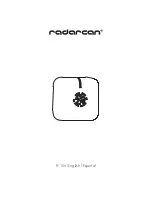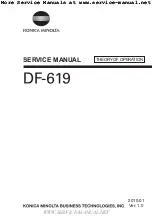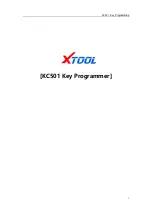
Chapter 6
– Maintenance
39
NOTICE
Make sure to wipe up and remove any soiling or impurities
from the tank with a cloth without leaving any residues. If dirt
particles are only detached but not actually removed, they can
get into the dirt particle filter integrated into the drain hose
while emptying the wastewater tank.
Non-observance could impair the service life of the dirt
particle filter and make it necessary to exchange the filter
at short notice.
Clean the left side of the water storage tank
(waste water) every two weeks.
The both chambers are emptied as follows:
Attach the drain hose on a quick-fitting connection (left of
the waste-water tank, to the right of the feed-water tank),
until this perceptibly engages
Drain off the water into a container with at least 5 litres
holding capacity.
To remove the drain hose again, press the grey release knob
at the quick-fitting connection. The hose detaches itself
automatically from the connection.
To remove the drain hose again, press the grey release knob
at the quick-fitting connection. The hose detaches itself
automatically from the connection.
Warning!
Please observe the following when removing the quick-
fitting connection:
■
When draining the storage chambers, stand to the side of
the connection
■
Be sure to hold the hose tight with the other hand while
pressing on the grey release button of the quick-fitting
connection in order to arrest the spring tension of the
connection.
Non-observance can lead to injuries.
Repeat the procedure for the other chamber if necessary.
Operation with feed water circulatory
system
If the steam sterilizer is operated in the feed water circulatory
system, the feed water must be changed every week.
Avoid formation of spots
Formation of spots due to improperly
cleaned instruments
Only if you correctly clean the instruments before sterilization
can you avoid the detachment of residues resulting from
loading or instrument preparation under steam pressure during
the sterilization. Detached dirt residues (e.g. residues of
disinfectants) can clog the filter, nozzles and valves of the
steam sterilizer and deposit as stains, spots or discolorations
on the instruments and in the chamber (see page 19,
Prepare
items to be sterilized
)
.
Formation of spots due to third-party rust
All steam-conducting parts of the steam sterilizer are made of
non-rusting materials. This excludes the formation of rust
caused by the steam sterilizer. Should rust stains occur, then
we are dealing with third-party rust.
If the instruments have been incorrectly prepared, rust can
form even on stainless steel instruments of leading
manufacturers. Often a single rust-producing instrument
















































